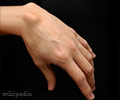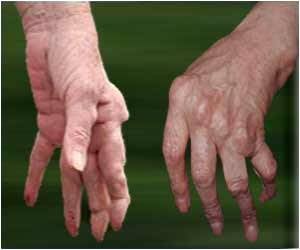Damaged bone joints anywhere in the body could be repaired with a simple injection, scientists believe.
Damaged bone joints anywhere in the body could be repaired with a simple injection, scientists believe.
If successful, the technology could used to treat arthritis and related problems, without the need for invasive surgery or powerful drugs.A team at Keele University, UK is testing injectible stem cells that can be controlled with a magnet.
Once injected these immature cells can be guided to precisely where their help is needed and encouraged to grow new cartilage and bone, work on mice shows.
Professor Alicia El Haj, working with Professor John Dobson, also of Keele University, explains that the injection would use the patient's own stem cells, harvested from their bone marrow.
These mesenchymal cells would be treated in the lab to give them a coating of minute magnetic particles.
These same magnetic nanoparticles are already approved in the US where they are routinely used as an agent to make MRI scans clearer to read.
Advertisement
Addressing the told the UK National Stem Cell Network conference, Professor Al Haj said: "The ultimate aim is to repair cartilage and bone. We have been able to grow new bone in mice. Now we will look at whether we can repair damaged sites in goats.
Advertisement
Meanwhile, experts at the University of Southampton, led by Professor Richard Oreffo, have treated four patients with hip joint problems using stem cell therapy.
The technique combines the patients own bone marrow stem cells with donor bone cells to patch-repair damaged bones that would otherwise need treatment with metal plates and pins.
They say it is only a matter of years before their method could be used routinely to treat some of the 60,000 people who fracture a hip in the UK each year, BBC reported.
Source-Medindia
GPL/L










